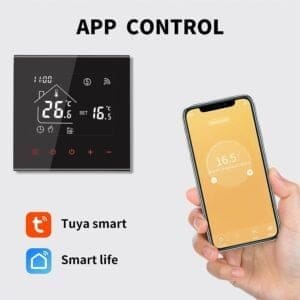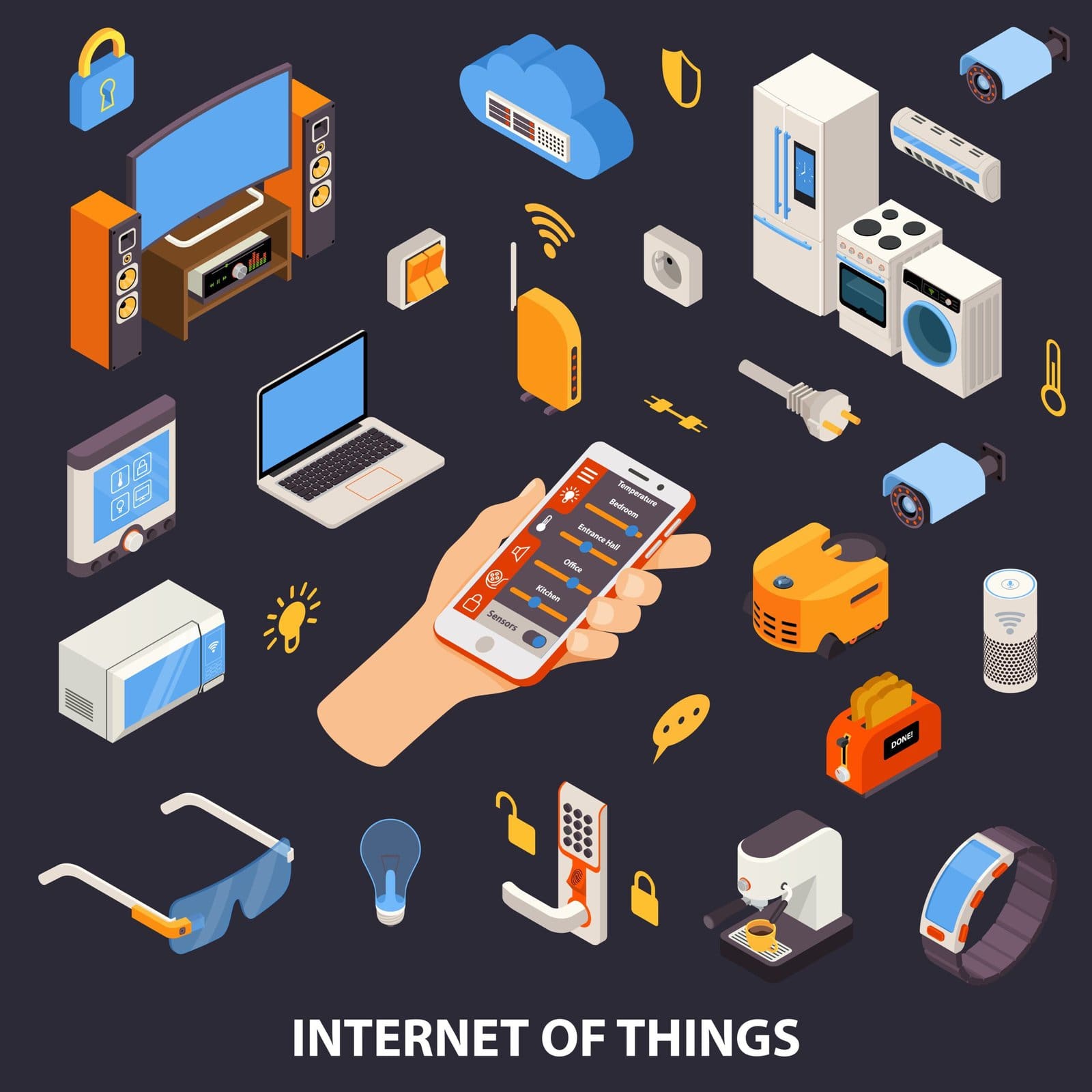smart homesmart homeImagine a world where your home acts as your personal assistant, anticipating your needs and making your life easier. This is the power of the Internet of Things (IoT) and its connection to home automation. The IoT refers to the network of physical devices, vehicles, appliances, and other objects that are embedded with sensors, software, and connectivity, enabling them to collect and exchange data. By connecting these devices to your home automation system, you can control and monitor various aspects of your home remotely, bringing a new level of convenience and efficiency to your daily life.
What is the Internet of Things (IoT)?
Definition of IoT
The Internet of Things (IoT) refers to the network of physical devices, vehicles, appliances, and other objects embedded with sensors, software, and connectivity that enables them to connect and exchange data. In simple terms, it is the concept of connecting any device to the internet, allowing it to communicate and interact with other devices or systems. These devices can range from everyday household objects to industrial machinery and infrastructure.
Components of IoT
The key components of IoT include:
- Things: These are the physical devices or objects that have the ability to connect to the internet. Examples include smart thermostats, security cameras, and wearable devices.
- Sensors: Sensors are responsible for collecting data from the environment and transmitting it to the IoT system. They provide valuable information about various parameters, such as temperature, humidity, light intensity, and motion.
- Connectivity: IoT devices utilize different communication protocols to connect to the internet and exchange data. These can include Wi-Fi, Bluetooth, Zigbee, and cellular networks.
- Data Processing: Once the data is collected from the sensors, it is processed and analyzed to generate insights and make informed decisions. This may involve cloud computing, edge computing, or a combination of both.
Importance of IoT
The Internet of Things has the potential to revolutionize the way we live and work. By connecting physical objects and enabling them to communicate, IoT offers numerous benefits and opportunities. Some of the key importance of IoT include:
- Efficiency: IoT can significantly improve the efficiency of various processes, such as energy management, transportation, and manufacturing. By collecting and analyzing real-time data, IoT systems can optimize resource utilization and reduce waste.
- Automation: IoT enables automation of various tasks, making our lives more convenient and removing the need for manual intervention. For example, home automation systems can automatically adjust the temperature, control lighting, and manage security based on predefined settings or user preferences.
- Enhanced Decision Making: By collecting and analyzing vast amounts of data, IoT provides valuable insights that can enhance decision-making processes. This is particularly useful in areas such as predictive maintenance, inventory management, and personalized healthcare.
- Improved Safety and Security: IoT can contribute to improved safety and security by enabling real-time monitoring and prompt response to any unusual events or emergencies. For instance, a smart home security system can send alerts to the homeowner’s smartphone if any suspicious activity is detected.
The Connection between IoT and Home Automation
Brief explanation of home automation
Home automation refers to the automation and control of various household functions and appliances. It involves the use of technology to remotely manage and monitor different systems within a home, such as heating and cooling, lighting, security, and entertainment. Home automation systems typically allow users to control and program these devices through a central hub or a smartphone app.
Integration of IoT in home automation
IoT has greatly enhanced the capabilities of home automation systems by providing connectivity and intelligence to everyday household objects. With IoT integration, home automation systems can now communicate with and control a wide range of devices and sensors. For example, a smart thermostat can connect to an IoT platform to create personalized temperature schedules based on the homeowner’s preferences and occupancy patterns.

Benefits of combining IoT and home automation
The combination of IoT and home automation offers several benefits to homeowners, including:
- Convenience: IoT-enabled home automation allows users to control various aspects of their home remotely through smartphone apps or voice commands. This means that homeowners can adjust the temperature, turn on/off lights, or monitor security cameras from anywhere.
- Energy Efficiency: IoT sensors and devices can collect real-time data about energy consumption, allowing homeowners to optimize their energy usage. For example, a smart thermostat can learn the residents’ preferences and automatically adjust the temperature to save energy when no one is at home.
- Improved Security: IoT-based home automation systems offer enhanced security features, such as remote monitoring, alerts, and even facial recognition. These features help homeowners keep their homes safe and secure, even when they are away.
- Personalized Experience: By analysing user preferences and patterns, IoT-enabled home automation systems can create personalized experiences. For instance, smart lighting can adjust itself based on the time of day and the occupants’ presence, creating a comfortable and welcoming ambiance.
Applications of IoT in Home Automation
Smart thermostats
Smart thermostats are one of the most popular IoT devices in home automation. These devices use sensors and connectivity to learn the residents’ heating and cooling preferences and create temperature schedules accordingly. They can also be controlled remotely through smartphone apps or voice assistants, providing convenience and energy savings.
Home security systems
IoT has revolutionized home security systems, making them more effective and user-friendly. Smart home security systems utilize a combination of sensors, cameras, and connectivity to monitor the home and alert the homeowner about any unusual activities. These systems can also be integrated with smartphone apps, allowing homeowners to remotely control and monitor the security of their homes.
Lighting control
IoT-enabled lighting systems provide homeowners with greater control and flexibility over their lighting. Smart lighting systems can be programmed to automatically adjust brightness, color, and turn on/off based on user preferences or occupancy patterns. They can also be controlled remotely through smartphone apps or voice commands, offering convenience and energy efficiency.
Smart appliances
IoT integration has made household appliances smarter and more efficient. Smart appliances, such as refrigerators, washing machines, and ovens, can now connect to the internet and communicate with users and other devices. For example, a smart refrigerator can send notifications about expiring food items or create shopping lists based on its inventory. These appliances can also be controlled remotely or through voice assistants, enhancing convenience.
Energy management
IoT plays a crucial role in energy management within homes. By integrating IoT sensors, smart meters, and energy monitoring devices, homeowners can track their energy consumption in real-time and identify areas for improvement. This enables them to make informed decisions about energy usage, leading to cost savings and reduced environmental impact.

Challenges in Implementing IoT for Home Automation
Security and privacy concerns
One of the major challenges in implementing IoT for home automation is addressing security and privacy concerns. With the increasing number of interconnected devices, there is a growing risk of unauthorized access, data breaches, and privacy violations. It is important to implement robust security measures, such as encryption, authentication, and regular software updates, to protect both the IoT devices and the user’s data.
Compatibility and interoperability
Another challenge is ensuring compatibility and interoperability among different IoT devices and systems. Since there are numerous manufacturers and technologies available, it can be difficult to ensure seamless communication and integration between devices from different vendors. Standards and protocols, such as Zigbee and Z-Wave, are being developed to address this issue and enable interoperability.
Complexity of the system
Implementing a comprehensive IoT-based home automation system can be a complex task. It requires careful planning, integration, and configuration of various devices, sensors, and software platforms. Homeowners may also face challenges in setting up and managing the system, especially if they are not well-versed in technology. Simplifying the setup process and providing user-friendly interfaces can help overcome this challenge.
Cost
Cost can be a significant barrier to widespread adoption of IoT-based home automation systems. IoT devices and sensors tend to be more expensive compared to traditional counterparts, which can make it difficult for some homeowners to invest in these systems. Additionally, there may be additional costs associated with infrastructure upgrades, installation, and maintenance. However, as technology advances and economies of scale come into play, the cost of IoT devices and systems is expected to decrease over time.
Current Trends in IoT and Home Automation
Voice assistants and smart speakers
Voice assistants and smart speakers, such as Amazon Echo and Google Home, have become increasingly popular in recent years. These devices utilize voice recognition technology to perform various tasks and interact with IoT-enabled devices. For example, users can control their smart home devices, play music, get weather updates, and even order groceries, all through voice commands.

Smart home hubs
Smart home hubs serve as a central control point for IoT devices within a home. They often come in the form of a physical device or an application that allows users to manage and control all their connected devices from a single interface. Smart home hubs offer greater convenience and simplify the management of multiple IoT devices.
Integration with wearables and smartphones
The integration of IoT with wearables, such as fitness trackers and smartwatches, has opened up new possibilities for home automation. Users can control their home devices, receive notifications, and access real-time data through their wearable devices. Similarly, smartphones have become a common interface for managing and controlling IoT devices, thanks to dedicated apps and voice assistants.
Artificial intelligence and machine learning
Artificial intelligence (AI) and machine learning (ML) technologies are increasingly being integrated with IoT for home automation. These technologies enable devices to learn from user behaviour, adapt to preferences, and make intelligent decisions. For example, an AI-powered home automation system can learn the residents’ energy consumption patterns and optimize energy usage without manual input.
Future Prospects of IoT in Home Automation
Expansion of smart home devices and technologies
The future of IoT in home automation is expected to witness a significant expansion in the availability and variety of smart home devices and technologies. The market is likely to see a proliferation of connected devices, ranging from smart mirrors and furniture to advanced home security systems and energy management solutions. This expansion will enable homeowners to automate and control more aspects of their homes, leading to greater convenience and efficiency.
Increased connectivity and interoperability
As IoT technology matures, there will be a stronger focus on improving connectivity and interoperability among different devices and platforms. Standards and protocols will continue to evolve, ensuring seamless communication and integration between devices from different manufacturers. This increased connectivity will enable a more holistic and integrated approach to home automation, where various devices work together seamlessly.
Advancements in voice and gesture control
Voice and gesture control are poised to take center stage in the future of home automation. The technology is rapidly improving, allowing users to interact with their IoT devices using natural language and simple gestures. This intuitive and hands-free control mechanism will further enhance the user experience and make home automation more accessible to a wider audience.
Ethical Considerations and Potential Risks
Data privacy and security
As more devices become connected through the IoT, the collection and sharing of personal data become a concern. Safeguarding the privacy and security of user data is crucial to ensure trust and widespread adoption of IoT-enabled home automation systems. Manufacturers and service providers must implement robust security measures, data encryption, and transparent data handling practices to protect user privacy.
Surveillance concerns
With the increasing number of connected cameras and sensors within the home, there are legitimate concerns about surveillance and invasion of privacy. Homeowners must be aware of the potential risks and ensure that their home automation systems adhere to ethical practices. Clear guidelines and regulations should be in place to control the use of surveillance devices and prevent potential misuse.

Ethical use of data
The massive amount of data generated by IoT devices presents ethical challenges in terms of data usage and ownership. It is crucial for manufacturers and service providers to be transparent about how they collect, store, analyse, and monetize user data. Clear consent and data governance policies should be in place, allowing users to have control over their own data and ensuring that it is used ethically.
Dependence on technology
As home automation systems become more prevalent, there is a risk of becoming overly dependent on technology. Reliance on IoT devices for everyday tasks may lead to a loss of manual skills and a decreased sense of self-sufficiency. It is essential to strike a balance between leveraging the benefits of technology and maintaining basic life skills.
Conclusion
The Internet of Things (IoT) and home automation have transformed the way we live, adding convenience, efficiency, and connectivity to our homes. IoT devices and technologies offer immense potential for enhancing various aspects of our lives, from energy management and security to personalized experiences. However, it is crucial to address challenges such as security, privacy, compatibility, and cost to ensure the widespread and responsible adoption of IoT-based home automation systems. By navigating these challenges and embracing the opportunities, we can create smarter, more connected, and user-friendly homes for a better future.
